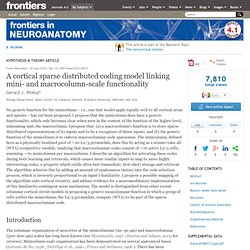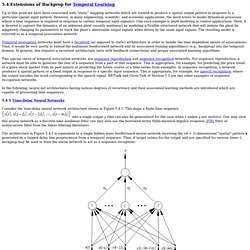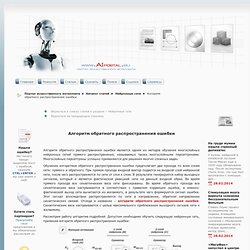

A cortical sparse distributed coding model linking mini- and macrocolumn-scale functionality. Introduction The columnar organization of neocortex at the minicolumnar (20–50 μm) and macrocolumnar (300–600 μm) scales has long been known (see Mountcastle, 1997 ; Horton and Adams, 2005 for reviews).

Minicolumn-scale organization has been demonstrated on several anatomical bases (Lorente de No, 1938 ; DeFelipe et al., 1990 ; Peters and Sethares, 1996 ). There has been substantial debate as to whether this highly regular minicolumn-scale structure has some accompanying generic dynamics or functionality. See Horton and Adams (2005) for a review of the debate. However, thus far no such generic function for the minicolumn – i.e., one that would apply equally well to all cortical areas and species – has been determined. A distributed representation of an item of information is one in which multiple units collectively represent that item, and crucially, such that each of those units generally participates in the representations of other items as well. Figure 1. Home Page of Geoffrey Hinton.
Exercise:Sparse Autoencoder - Ufldl. From Ufldl Download Related Reading Sparse autoencoder implementation In this problem set, you will implement the sparse autoencoder algorithm, and show how it discovers that edges are a good representation for natural images.

(Images provided by Bruno Olshausen.) The sparse autoencoder algorithm is described in the lecture notes found on the course website. In the file sparseae_exercise.zip, we have provided some starter code in Matlab. Specifically, in this exercise you will implement a sparse autoencoder, trained with 8×8 image patches using the L-BFGS optimization algorithm. A note on the software: The provided .zip file includes a subdirectory minFunc with 3rd party software implementing L-BFGS, that is licensed under a Creative Commons, Attribute, Non-Commercial license. Step 1: Generate training set The first step is to generate a training set. Результат поиска Google для. 5.4 Extensions of Backprop for Temporal Learning Up to this point we have been concerned with "static" mapping networks which are trained to produce a spatial output pattern in response to a particular spatial input pattern.

However, in many engineering, scientific, and economic applications, the need arises to model dynamical processes where a time sequence is required in response to certain temporal input signal(s). One such example is plant modeling in control applications. Here, it is desired to capture the dynamics of an unknown plant (usually nonlinear) by modeling a flexible-structured network that will imitate the plant by adaptively changing its parameters to track the plant's observable output signals when driven by the same input signals.
The resulting model is referred to as a temporal association network. Temporal association networks must have a recurrent (as opposed to static) architecture in order to handle the time dependent nature of associations. Алгоритм обратного распространения ошибки. Алгоритм обратного распространения ошибки является одним из методов обучения многослойных нейронных сетей прямого распространения, называемых также многослойными персептронами.

Многослойные персептроны успешно применяются для решения многих сложных задач. Обучение алгоритмом обратного распространения ошибки предполагает два прохода по всем слоям сети: прямого и обратного. При прямом проходе входной вектор подается на входной слой нейронной сети, после чего распространяется по сети от слоя к слою. В результате генерируется набор выходных сигналов, который и является фактической реакцией сети на данный входной образ.
Во время прямого прохода все синаптические веса сети фиксированы. Рассмотрим работу алгоритма подробней. На приведенном рисунке использованы следующие условные обозначения: В качестве активационной функции в многослойных персептронах, как правило, используется сигмоидальная активационная функция, в частности логистическая: Neural Network Software, Neural Networks, NeuroSolutions. NeuroSolutions Video Library To view in full high-definition and/or full screen click the play button and then on the YouTube HD icon in the lower right corner of the video.

Levenberg-Marquardt (3:32) This video was introduced in the November 2008 NeuroSolutions Newsletter as a NeuroSolutions Tip Box. This video demonstrates one of the most significant enhancements made in NeuroSolutions 5.0, the addition of the Levenberg-Marquardt learning algorithm. Levenberg-Marquardt (LM) is one of the most efficient higher-order adaptive algorithms known for minimizing the MSE of a neural network. Finding Input-Output Relationships (3:06) This video was introduced in the August 2008 NeuroSolutions Newsletter as a NeuroSolutions Tip Box. NeuroEvolution of Augmenting Topologies. I created this page because of growing interest in the use and implementation of the NEAT method. I have been corresponding with an expanding group of users. Because the same points come up more than once, it makes sense to have a place where people can come and tap into the expanding knowledge we have about the software and the method itself.
We also developed an extension to NEAT called HyperNEAT that can evolve neural networks with millions of connections and exploit geometric regularities in the task domain. The HyperNEAT Page includes links to publications and a general explanation of the approach. New! Tutorial Available: Wesley Tansey has provided a helpful tutorial on setting up a Tic-Tac-Toe experiment in SharpNEAT 2. NEAT Software FAQ - Questions that mostly relate to coding issues or using the actual software. First, how closely does the package you want follow my (Ken's) original NEAT source code?
Second, what is your favorite platform? Third, what language do you prefer?